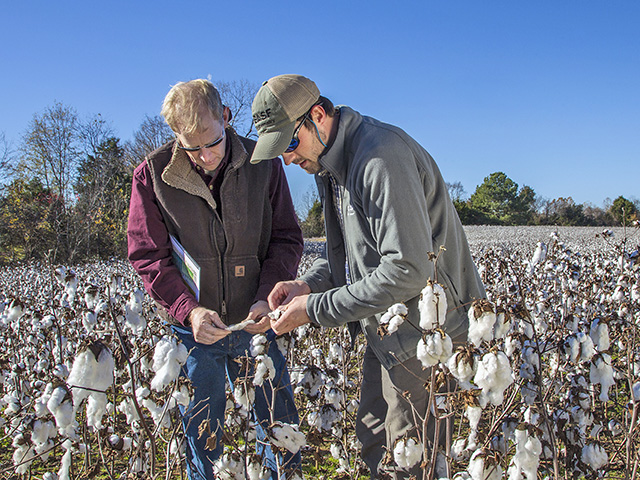This yearlong endeavor looks at how four farmers are evaluating technology and agronomic information that can boost the productivity of their operations.

Like a lot of U.S. farmers, Jason Luckey expects to do some belt tightening in the 2016 season. His plan is to use innovative practices and technology to trim crop input costs that won't sacrifice yields and profits in the process.
Variable–rate seeding is one of Luckey's go–to practices. It has helped the west Tennessee grower lower his overall seed costs in recent years. In 2008, as he began mapping yields, Luckey started to identify and trace the productivity within individual fields. Today, that information helps Luckey plant a higher seed count on productive ground and fewer seeds in unproductive areas.
In corn, he formerly planted 32,000 seeds per acre across fields. With variable–rate seeding, he now plants as many as 38,000 seeds in high–yielding areas and as few as 22,000 seeds in less productive areas. In soybeans, he used to plant 180,000 seeds per acre. With variable rate, he now plants 140,000 to 220,000 seeds per acre.
"Variable–rate seeding saves seed costs and increases yield," says Luckey, who is based near Humboldt. "Some of the lower productive areas perform a little better because of less competition with a thinner stand."
Luckey also variable–rates his fertilizer and has seen a major lime savings. "Back in the day before variable–rate application, if soil samples called for 2 tons of lime per acre, we applied that amount across the whole field," he recalls. "But with variable–rate lime, maybe only 5 acres in a 50–acre field might need 2 tons, while the rest of the field needs less."
Additionally, Luckey no longer makes a blanket fungicide application across all of his cotton ground. Instead, in 2014 and 2015, he applied Headline fungicide on 200 to 300 acres of cotton in fields he determined as having top–end yield potential. The fungicide–treated fields ended up producing his best–yielding cotton both years.
Something new he tried in 2015 was going heavy with dicamba–tolerant cotton. "My brother, Ken, and I planted half our cotton crop to DP 1518 B2XF, DP 1522 B2XF and NG 3406 B2XF," he says. "DP 1522 B2XF was my top yielder, averaging more than 1,300 pounds per acre. It was one of the finest cotton crops that I've ever picked."
Since dicamba was not labeled for over–the–top applications, Luckey applied it as a burndown 21 days before he planted cotton. The spring application helped him control problem weeds such as glyphosate–resistant Palmer amaranth. Now Luckey says he hopes EPA will approve BASF Engenia, a new low–volatility dicamba formulation, for use in 2016 because it fits his no–till cotton and soybean weed–control program.
Luckey's BASF Innovation Specialist, Wesley Rodgers, says growers have some adjustments to make when it comes to making the best use of the technology. "As growers change their herbicide plans with dicamba–tolerant crops, it will be important that [they] develop a plan of action when addressing glyphosate–resistant weeds," Rodgers says.
Luckey farms about 4,500 acres—1,500 acres each of cotton, corn and soybeans. He also double–crops wheat with some soybeans. The majority of his corn is followed by wheat; some hill farms will go back to cotton.
He doesn't plan to adjust his cropping system in 2016. "My grandfather and father always preached diversification—and never plant the markets," he says. "We always stick with our rotation and diversification."
Luckey mainly farms dryland; he uses one 140–acre pivot that a landlord put in two years ago. "Corn has been under it both times," he adds. "We plan to plant wheat/beans under it in 2016."
Luckey farms rolling land and says wheat helps control erosion. He also has farmed 100% no–till since 1996. He might smooth out some ruts in the fall, but he basically leaves the ground covered with residue from the previous crop.
"In 20 years of farming no–till, we've seen better soil tilth, better weed control and soil moisture, and less erosion," he says. "I picked up a farm several years back that had been planted to continuous cotton. I rotated corn and wheat/beans and have seen that farm's yield improve."
In 2016, he plans to try Priaxor fungicide on cotton for target spot, which is spreading into west Tennessee cotton and soybeans.